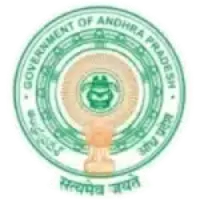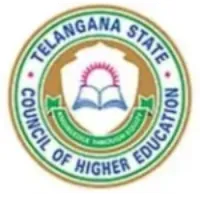Latest Applications Open 2024:
AP PGECET 2024 Civil Engineering Syllabus has been Available now. The AP PGECET Civil Engineering Syllabus is a vital resource for candidates aspiring to pursue postgraduate studies in this field. This comprehensive syllabus outlines the key topics and subjects covered in the AP PGECET examination. Civil Engineering encompasses various disciplines, including structural, geotechnical, transportation, environmental, and more. The syllabus delves into these areas, ensuring candidates understand the field well.
Topics covered include structural analysis, concrete technology, environmental engineering, transportation engineering, and more. Candidates are expected to have a strong grasp of fundamental principles, advanced concepts, and their practical applications in civil engineering.
By thoroughly studying the AP PGECET Civil Engineering Syllabus and practising with past papers, candidates can prepare effectively for the exam, enhancing their chances of securing admission to reputable institutions and advancing their careers in civil engineering. It’s essential to approach the syllabus with dedication and a clear study plan to excel in this competitive examination.
AP PGECET 2024 Civil Engineering Syllabus – Available
AP PGECET 2024 Civil Engineering Syllabus has been Available now. Click to Download Syllabus PDF.
Engineering Mathematics
Engineering Mathematics is a fundamental branch of mathematics that plays a crucial role in various engineering disciplines. It encompasses a wide range of mathematical concepts and techniques used to solve complex engineering problems and analyze systems. This field provides the mathematical foundation for engineers to model, analyze, and optimize engineering systems, from electrical circuits to structural designs. Engineering Mathematics is essential for engineers to make informed decisions, design innovative solutions, and ensure engineering projects’ functionality, safety, and efficiency across different domains. It bridges the gap between theory and practical application in engineering.
Linear Algebra: Matrix algebra, Systems of linear equations, Eigen values, and Eigen vectors.
Latest Applications For Various UG & PG Courses Open 2024
-
- Parul University | Admissions Open for All Courses 2024. Apply Now
- Chandigarh University | Admissions Open for All Courses 2024. Apply Now
- IIAD, Delhi | Admissions Open for All Courses 2024. Apply Now
- GIBS, Bangalore | PGDM Applications Open. Package upto 15.5 LPA. Apply Now
- GNIOT, Greater Noida | Admissions Open for All Courses 2023. Apply Now
- The Design Village | Admissions Open for All Courses 2024. Apply Now
- IMS Ghaziabad UC Campus | Admissions Open for All Courses 2024. Apply Now
- KIIT School of Management | Admissions Open for All Courses 2024. Apply Now
- KSRM | Admissions Open for All Courses 2024. Apply Now
- Jaipuria Institute of Management | Admissions Open for All Courses 2024. Apply Now
- NIIT | Admissions Open for All Courses 2024. Apply Now
- MITWPU | Admissions Open for All Courses 2024. Apply Now
- KL University | Admissions Open for All Courses 2024. Apply Now
- Alliance MBA | Admissions Open for All Courses 2024. Apply Now
- Alliance UG | Admissions Open for All Courses 2024. Apply Now
- GD Goenka | Admissions Open for All Courses 2024. Apply Now
Calculus: Functions of a single variable, Limit, continuity, and differentiability, Mean value theorems; Evaluation of definite and improper integrals, Partial derivatives, Total derivatives, Maxima and minima, Gradient, Divergence and Curl, Vector identities, Directional derivatives, Line, Surface and Volume integrals, Stokes, Gauss, and Green’s theorems.
Differential equations: First-order equations (linear and nonlinear), Higher order linear differential equations with constant coefficients, Cauchy’s and Euler’s equations, Initial and boundary value problems, Laplace transforms, Solutions of one-dimensional heat and wave equations, and Laplace equation.
Complex variables: Analytic functions, Cauchy’s integral theorem, Taylor and Laurent series.
Probability and Statistics: Definitions of probability and sampling theorems, Conditional probability, Probability Density Function, Mean, median, mode and standard deviation, Random variables, Exponential, Poisson, Normal, and Binomial distributions.
Numerical Methods: Numerical solutions of linear and non-linear algebraic equations Integration by
trapezoidal and Simpson’s rule, single and multi-step methods for differential equations.
Structural Engineering
Structural Engineering is a branch of civil engineering that focuses on designing, analyzing, and ensuring the safety and stability of structures such as buildings, bridges, and dams. It plays a pivotal role in shaping our modern infrastructure, ensuring that these structures can withstand various forces and environmental conditions. Structural engineers use their expertise to create innovative and efficient designs while adhering to strict safety standards. They are essential in the construction industry, contributing to developing safe and resilient structures that improve the quality of our daily lives.
Mechanics: Bending moment and shear force in statically determinate beams. Simple stress and strain
Relationship: Stress and strain in two dimensions, principal stresses, stress transformation, Mohr’s circle. Simple bending theory, flexural and shear stresses, unsymmetrical bending, shear center. Thin-walled pressure vessels, uniform torsion, column buckling, combined and direct bending stresses.
Structural Analysis: Analysis of statically determinate trusses, arches, beams, cables, and frames, displacements in statically determinate structures and analysis of statically indeterminate structures by force/energy methods, analysis by displacement methods (slope deflection and moment distribution methods), influence lines for determinate and indeterminate structures. Basic concepts of matrix methods of structural analysis.
Concrete Structures: Concrete Technology – properties of concrete, basics of mix design. Concrete design basic working stress and limit state design concepts, analysis of ultimate load capacity, and design of members subjected to flexure, shear, compression, and torsion by limit state methods. Basic elements of pre-stressed concrete, analysis of beam sections at transfer and service loads.
Steel Structures: Analysis and design of tension and compression members, beams and beam-columns, column bases. Connections-simple and eccentric, beam-column connections, plate girders, and trusses. Plastic analysis of beams and frames.
Geotechnical Engineering
Geotechnical Engineering is a specialized field of civil engineering that focuses on studying soil and its behavior under various conditions. It plays a crucial role in infrastructure development, providing insights into soil properties, foundation design, slope stability, and earthworks. Geotechnical engineers assess soil suitability for construction projects, ensuring safety and stability. This discipline is essential for building strong and resilient structures, such as bridges, buildings, and roads, by addressing soil-related challenges and optimizing construction techniques. Geotechnical Engineering is at the core of civil engineering, safeguarding the integrity and longevity of infrastructure projects worldwide.
Soil Mechanics: Origin of soils, soil classification, three-phase system, fundamental definitions, relationship and Inter-relationships, permeability & seepage, effective stress principle, consolidation, compaction, shear strength.
Foundation Engineering: Sub-surface investigations-scope, drilling bore holes, sampling, penetration tests, plate load test. Earth pressure theories, the effect of the water table, layered soils. Stability of slopes infinite slopes, finite slopes. Foundation types-foundation design requirements. Shallow foundations-bearing capacity, effect of shape, water table and other factors, stress distribution, settlement analysis in sands & clays. Deep foundations pile types, dynamic & static formulae, load capacity of piles in sands & clays, negative skin friction.
Water Resources Engineering
Water Resources Engineering is a crucial field focused on the management, distribution, and sustainable use of water resources. It encompasses the study and design of various water-related systems, including dams, irrigation networks, and wastewater treatment facilities. This discipline plays a vital role in addressing global challenges such as water scarcity, pollution, and climate change impacts. Water Resources Engineers work to ensure the efficient and responsible utilization of this finite resource, contributing to the well-being of communities and the preservation of our environment.
Fluid Mechanics and Hydraulics: Properties of fluids, the principle of conservation of mass, momentum, energy, and corresponding equations, potential flow, applications of momentum and Bernoulli’s equation, laminar and turbulent flow, flow in pipes, pipe networks. Concept of boundary layer and its growth. Uniform, critical, and gradually varied flow in channels, specific energy concept, hydraulic jump. Forces on immersed bodies, flow measurements in channels, tanks, and pipes. Dimensional analysis and hydraulic modeling. Kinematics of flow, velocity triangles, and specific speed of pumps and turbines.
Hydrology: Hydrologic cycle, rainfall, evaporation, infiltration, stage discharge relationships, unit hydrographs, flood estimation, reservoir capacity, reservoir and channel routing. Well, hydraulics.
Irrigation: Duty, delta, estimation of evapotranspiration. Crop water requirements. Design of lined and unlined canals, waterways, headworks, gravity dams, and spillways. Design of weirs on permeable foundation. Types of irrigation systems, irrigation methods. Water logging and drainage, sodic soils.
Environmental Engineering
Environmental engineering is a multidisciplinary field that addresses environmental challenges and safeguards the planet’s well-being. It encompasses designing, implementing, and managing sustainable solutions for issues like pollution control, water and air quality management, waste disposal, and ecological preservation. Environmental engineers are pivotal in finding innovative and eco-friendly solutions to complex environmental problems, contributing to a cleaner, healthier, and more sustainable world.
Water and Waste Water Engineering: Drinking water quality standards, water demand/requirements,
Unit operations and unit processes for surface water treatment, sedimentation, coagulation, filtration,
disinfection, special treatment methods, and water distribution. Sewage and sewerage, sewer appurtenances, Quantity and characteristics of domestic wastewater, primary, secondary, and tertiary treatment of domestic wastewater, effluent discharge standards, sludge treatment, and disposal.
Air Pollution: Types of pollutants, their sources and impacts, air pollution meteorology, air pollution control methods and units, air quality standards, and limits.
Municipal Solid Wastes: Characteristics, generation, collection, and transportation of solid wastes, engineered systems for solid waste management (reuse/ recycle, energy recovery, treatment, and disposal.
Noise Pollution: Impacts of noise, permissible limits, measurement of noise, and control of noise pollution.
Transportation Engineering
Transportation Engineering is critical in shaping our modern world by designing, planning, and managing the systems that keep people and goods moving efficiently. It encompasses constructing and maintaining roads, highways, bridges, and transit systems, as well as traffic management and safety measures. This field is essential for ensuring safe and convenient transportation, reducing congestion, and promoting sustainable mobility. Transportation engineers work on solutions to enhance the infrastructure and transportation networks that connect societies, fostering economic development and improving the overall quality of life.
Highway Planning: Geometric design of highways, testing and specifications of paving materials, and design of flexible and rigid pavements.
Latest Applications For Various UG & PG Courses Open 2024
-
- Parul University | Admissions Open for All Courses 2024. Apply Now
- Chandigarh University | Admissions Open for All Courses 2024. Apply Now
- IIAD, Delhi | Admissions Open for All Courses 2024. Apply Now
- GIBS, Bangalore | PGDM Applications Open. Package upto 15.5 LPA. Apply Now
- GNIOT, Greater Noida | Admissions Open for All Courses 2023. Apply Now
- The Design Village | Admissions Open for All Courses 2024. Apply Now
- IMS Ghaziabad UC Campus | Admissions Open for All Courses 2024. Apply Now
- KIIT School of Management | Admissions Open for All Courses 2024. Apply Now
- KSRM | Admissions Open for All Courses 2024. Apply Now
- Jaipuria Institute of Management | Admissions Open for All Courses 2024. Apply Now
- NIIT | Admissions Open for All Courses 2024. Apply Now
- MITWPU | Admissions Open for All Courses 2024. Apply Now
- KL University | Admissions Open for All Courses 2024. Apply Now
- Alliance MBA | Admissions Open for All Courses 2024. Apply Now
- Alliance UG | Admissions Open for All Courses 2024. Apply Now
- GD Goenka | Admissions Open for All Courses 2024. Apply Now
Traffic Engineering: Traffic characteristics, traffic flow theory, intersection design, traffic signs and signal design, highway capacity.
Surveying: Importance of surveying, principles and classifications, mapping concepts, coordinate system, map projections, measurements of distance and directions, leveling, theodolite traversing, plane table surveying, errors, adjustments, curves.

As a dedicated Biology Science graduate, I’m passionate about sharing the latest updates in national and state entrance exams through my blog. I aim to keep aspiring students informed about exam trends, important dates, and changes in syllabi. With a keen interest in education, I strive to offer valuable insights for students navigating the competitive landscape of entrance examinations and admission tests. Stay updated with me.

